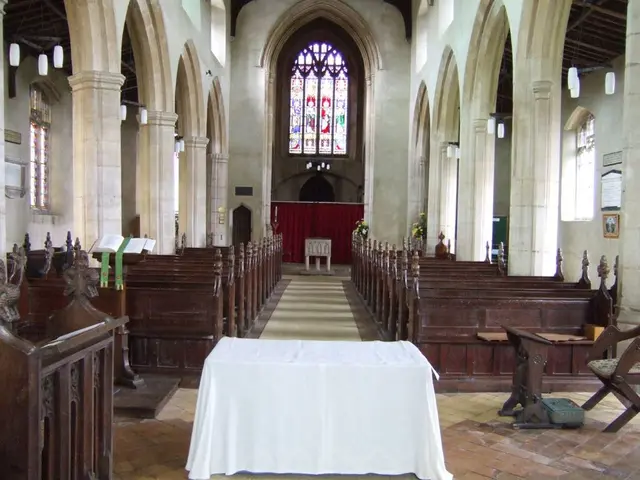World Heritage Status Granted to Bavaria's King's Castles by UNESCO - Unesco Recognizes Bavarian Castles as World Heritage Sites
In a momentous decision, the World Heritage Committee of UNESCO has recognised four iconic Bavarian castles and a palace as World Heritage Sites. The inscription ceremony took place during a meeting in Fuzhou, China, marking a significant cultural achievement for Germany.
The Bavarian castles and palace, including Neuschwanstein, Herrenchiemsee, Linderhof Palaces, and the Royal Villa on the Berg Schachen, have been added to the prestigious list. This is the first time that an entire ensemble of German royal residences has been added to the UNESCO World Heritage List.
Neuschwanstein Castle, with its romantic architecture and artistic inspirations, is one of Europe's most popular tourist attractions. Commissioned by King Ludwig II, it reflects his desire for a secluded, romantic retreat. The castle features wall paintings inspired by Richard Wagner's operas, such as Parsifal and Lohengrin, and includes a two-story throne room, Singers' Hall, and a courtyard with the Knights' House and the Bower.
Herrenchiemsee Palace, a replica of the Palace of Versailles, showcases grand halls and gardens. Built by King Ludwig II as a tribute to Louis XIV of France and to reflect his admiration for the French monarchy, it is located on Herreninsel, the largest island in Lake Chiemsee.
Linderhof Palace, the smallest of Ludwig's palaces but the only one completed during his lifetime, features a unique grotto and a Moorish-style kiosk. Built to serve as a retreat for King Ludwig II, it showcases his love for nature and solitude, and demonstrates his eclectic architectural tastes.
The Royal Villa on the Berg Schachen, built in the Swiss chalet style, offers a quieter, more secluded environment compared to the other palaces. Constructed for King Ludwig II as a hunting lodge and retreat, it represents a more humble side of Ludwig's architectural endeavors, contrasting with his grander projects.
The inscription of these Bavarian castles and palace by the commission of UNESCO's cultural organization is a testament to the architectural genius of King Ludwig II. It is also expected to boost tourism in the region, attracting visitors from around the world to experience the architectural beauty and historical significance of these sites.
The inscription of these Bavarian castles and palace marks a milestone in preserving and promoting cultural heritage on a global scale. It is a reminder of the importance of maintaining these architectural masterpieces for future generations to admire and learn from.
The Community policy should prioritize the growth of tourism industry to effectively manage the anticipated rise in visitors following the UNESCO World Heritage status of the Bavarian castles and palace. Concurrently, the Employment policy should focus on creating jobs and training programs for the local inhabitants to enable them to cater to the lifestyle and travel needs of the expected tourists.




